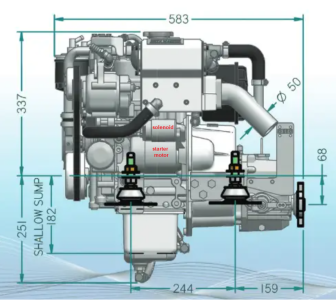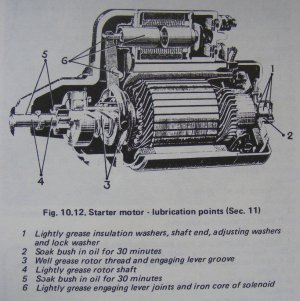DangerousPirate
Active member
I am not sailing at the moment, but I regularly start the engine at least every few weeks as part of maintenance check ups. Been a while that I did so since last time, about 1,5 months, and shockingly it won't start! The panel shows "low battery" and there is no buzz for low oil pressure to be heard, the engine won't start, and I can't even hear the starter engine trying, so it's definitely an electric fault.
The starter battery is fully charged at 12,7 (checked with multimeter when disconnected from everything), the battery alternator switch is enabled for both domestic and starter battery (although I tried starter battery only as well). When I put the key in half position, I can see the lights come up sometimes, other times they are very "weak" looking and fade away or don't show, a little play with the key will bring them back to life.
Checking the cable, it looked good to me, no hard bents any where, the crimps looked fine. Although the battery terminal clamp, which the cable was connected to, literally crumbled apart when I tried to tighten the nut again. But the problem persists, even if I put the crimp directly on the battery terminal. Sometimes it sparks, so there is electricity flowing. Ordered a new pack of terminals but I don't think this is where the issue lays.
I am really clueless what else I could be looking for.
I would have liked to check on the starter motor itself, but not exactly sure what that looks like or where exactly it's located (any help here would be appreciated). I had a look at the manual on the website, but that didn't help so much with identifying the part.
Logically thinking, since nothing happened since the last time I ran it, there must be some fault at some of the connection points (probably rust or come loose) but I couldn't find anything before it became dark.
Am I on the right track here, or do you think it's something completely different?
The starter battery is fully charged at 12,7 (checked with multimeter when disconnected from everything), the battery alternator switch is enabled for both domestic and starter battery (although I tried starter battery only as well). When I put the key in half position, I can see the lights come up sometimes, other times they are very "weak" looking and fade away or don't show, a little play with the key will bring them back to life.
Checking the cable, it looked good to me, no hard bents any where, the crimps looked fine. Although the battery terminal clamp, which the cable was connected to, literally crumbled apart when I tried to tighten the nut again. But the problem persists, even if I put the crimp directly on the battery terminal. Sometimes it sparks, so there is electricity flowing. Ordered a new pack of terminals but I don't think this is where the issue lays.
I am really clueless what else I could be looking for.
I would have liked to check on the starter motor itself, but not exactly sure what that looks like or where exactly it's located (any help here would be appreciated). I had a look at the manual on the website, but that didn't help so much with identifying the part.
Logically thinking, since nothing happened since the last time I ran it, there must be some fault at some of the connection points (probably rust or come loose) but I couldn't find anything before it became dark.
Am I on the right track here, or do you think it's something completely different?


